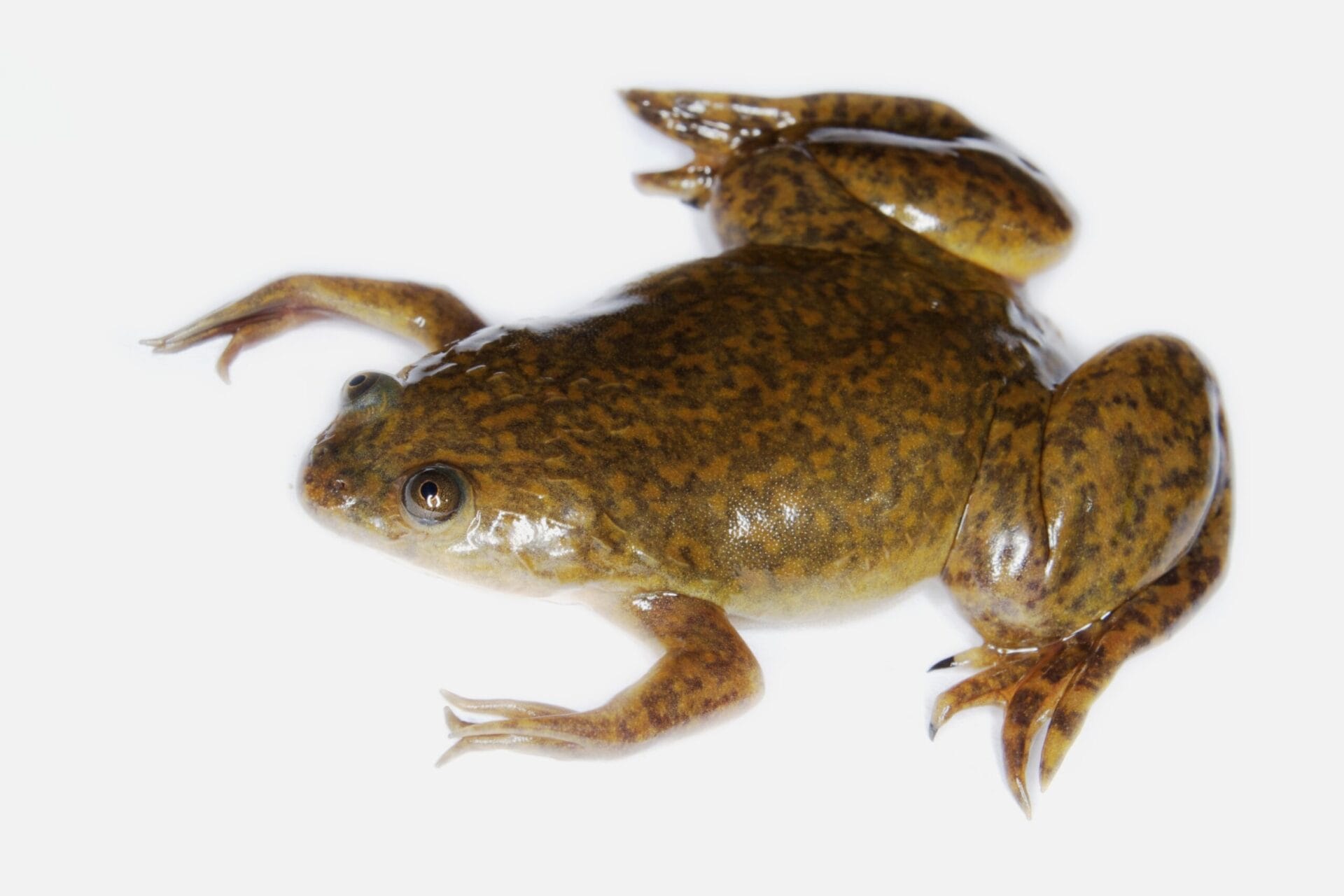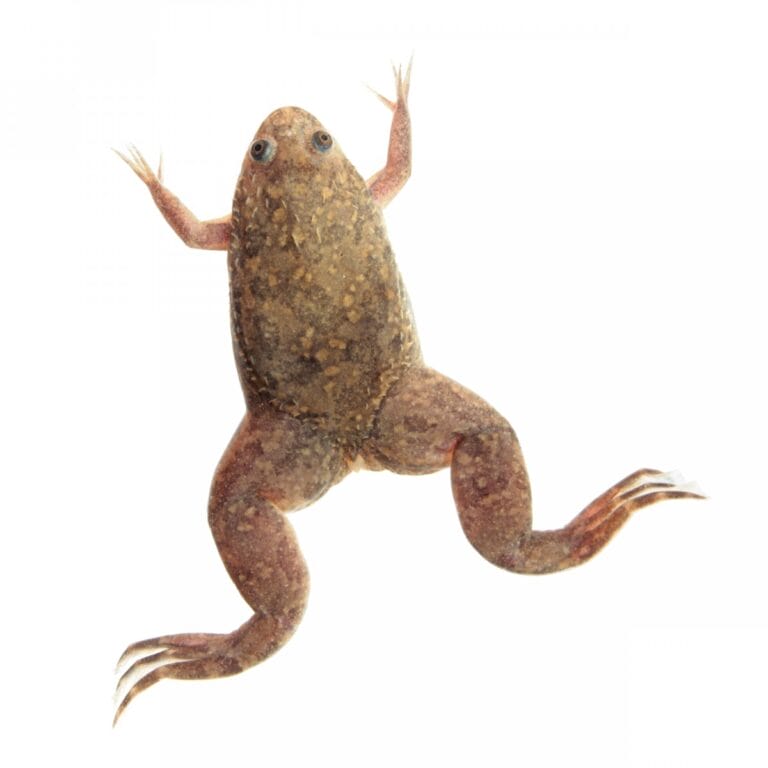Model organisms: the clawed frog
Brian Gratwicke / via Wikimedia Commons

Much of our current knowledge about the early development of vertebrates comes from studies using the African clawed frog (Xenopus laevis) and Western clawed frog (Xenopus tropicalis).
- Model organisms are non-human species that are used in research to help us understand specific areas of biology.
- The African clawed frog (Xenopus laevis) and Western clawed frog (Xenopus tropicalis) are the best understood amphibians.
- Scientists use the frog to understand more about the way animals develop and evolve.
What is the clawed frog – or ‘Xenopus’?
- The African clawed frog (Xenopus laevis) and Western clawed frog (Xenopus tropicalis) are often used for developmental, cell and molecular biology research.
- They are fully aquatic and have flattened bodies with small heads, no eyelids, muscular hind limbs, fully webbed toes with claws and small front limbs which they use to shovel food into their mouths. X laevis can live for as long as 30 years.
- Xenopus tropicalis was the first amphibian genome to be sequenced, in 2010. Scientists use this information to engineer and mutate its genes to understand how they work, and how that applies to evolution and early animal development.
- Xenopus frogs are used in research under the principles of the 3Rs: Replacement (using alternatives where possible), Reduction (designing experiments that minimise the number of mice needed) and Refinement (using methods that improve their welfare).

What have we learned using the frog in research?
X laevis and X tropicalis have been used for different areas of research – typically, X laevis has revealed important information about body development, while X. tropicalis is used in genetic studies as they have a simpler genome.
The information revealed by both Xenopus species includes:
- How a fertilised egg develops into an early embryo – and information about early developmental disorders and conditions.
- How the central nervous system – including the spinal cord and neurons – develops in vertebrate embryos, including in human development. This has led to new information about spinal cord injuries and treatments.
- How vertebrates evolved – Xenopus and humans last shared a common ancestor around 360 million years ago. Studying their chromosomes has helped us understand how the DNA has changed over time, leading to the present-day mammalian and amphibian genomes.
What are some of the benefits and limitations of using the Xenopus frog as a model organism?
Benefits of using the Xenopus frog
- Xenopus frogs are easily bred and maintained in the laboratory. The frogs themselves are relatively small – X tropicalis and X laevis grow to about 5 and 12 cm long, respectively.
- They are useful models of early embryonic development – their eggs are relatively large and robust and develop into transparent tadpoles within a couple of days. Because the embryos develop outside of the body, they can be easily manipulated in experiments.
- Xenopus frogs lay many eggs at once – X laevis can produce up to 1000 eggs, while X tropicalis can produce up to 3000. If well cared for, Xenopus females can mate up to six times a year and males once a month.
- Genetically, they are very similar to humans – at least 80% of human disease genes have an equivalent in X tropicalis
Limitations of using the frog
- X laevis is difficult to do genetic studies with – with a genome nearly twice as large of X tropicalis, due to an ancient duplication of its chromosomes.
- They have a long generation time of around up to two years, making the generation of colonies with stable genetic alterations a long process.
- They are not as well understood as other model organisms, meaning the databases of information available aren’t as rich.
- Many animals need to be bred for genetic experiments. Some of these won’t be used, because they won’t all have the right genetics for a given experiment.
- We don’t fully understand what could happen if genetically engineered animals entered the natural ecosystem.
- As with all animal research, there are ethical and moral questions to consider.